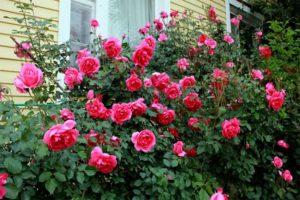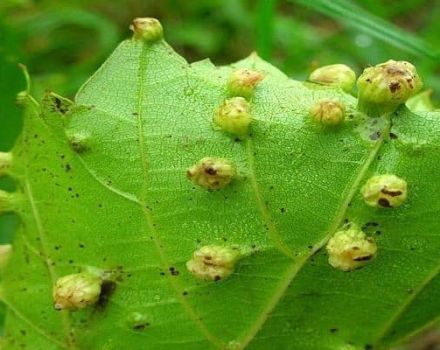Description of hybrid tea rose varieties Versilia, cultivation technology
Hybrid tea rose Versilia is a beautiful and long-flowering plant with good immunity and resistance to many diseases. The inflorescence is used to beautify the street area, gardens and squares. The rose is also used in cut form. In a vase of water, it can retain its external characteristics for several weeks.
The history of the Versilia hybrid tea rose
The hybrid rose was bred at the end of the 20th century, namely in 1990. The variety was developed by French botanists. All experiments were carried out in the well-known NIRP International nursery. From the very beginning, gardeners liked the pretty rose, which has a high level of cut vitality. After a while, the variety appeared in Russia.
Description of the variety
Terry rose is distinguished by small inflorescences of a pastel shade. Its bud has a goblet shape, it develops on a strong peduncle. The size of the inflorescence can reach 12 cm in diameter. One bud contains up to 30 velvety petals. Shrub rose reaches a height of 130 cm. Its bushes are erect. The leaves have a shiny surface and are dark green in color. The rose exudes a subtle and subtle vanilla aroma.
What is the difference from other species?
The main feature of the variety is long-term durability after cutting. The plant stands in a vase for a long time and does not lose its original appearance and aroma. The plant culture is resistant to cold weather and sudden changes in temperature. These qualities are not distinguished by other members of the Rosaceae family.

Features of care before and after flowering
The plant needs regular watering and pruning. These procedures are necessary for productive growth and the formation of new shoots. A shrub rose needs to be weeded regularly to remove weeds. This approach helps to speed up the appearance of inflorescences during the growing season. For productive growth, organic and mineral fertilizing is used, as well as prophylactic agents for diseases.
Important! After the end of the flowering period, the roses are weeded, pruned and irrigated with prophylactic agents.
What if there are no buds?
The absence of buds may indicate improper care of the inflorescence. Slow growth indicates a lack of mineral components, poorly developed root system. To fix the problem, you need to fertilize with potash fertilizers, as well as products containing an increased level of nitrogen in the composition. After this, abundant watering should be carried out.
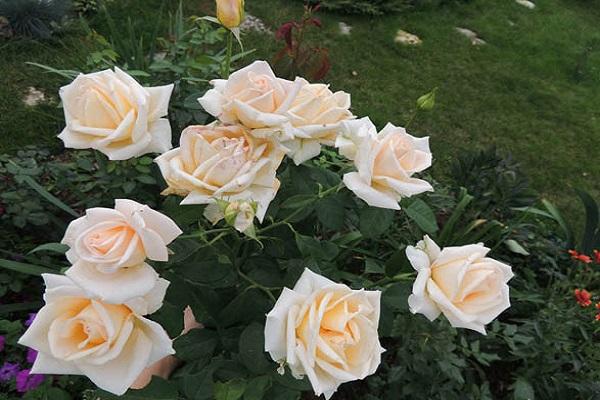
When and how does bloom happen?
You can see the first velvet buds on the bushes in early or mid-May. This occurs after young shoots have grown from the buds. Inflorescences bloom gradually. This indicator is important for progressive cutting. Rose of Versilia blooms continuously throughout the summer, even at low temperatures and cloudy weather. The end of the growing season falls in early and mid-September.
The subtleties of growing a plant
So that the plant culture is not exposed to the development of diseases, it is necessary to remember about competent growing conditions.

When to plant?
The rose should be planted at a time when the air is already completely warmed up. The optimal period is mid or late May. In cold regions, planting is carried out in June. It is better to carry out the procedure on a warm and calm day.
The temperature should not be lower than +10 degrees.
Location selection
Special attention should be paid to the choice of the site. Experienced botanists advise planting flowers on the south side of the site. The rose loves sunny colors, so shady places will not work in this case. Only a little shading on one side is acceptable. Do not plant under large tree crowns, close to walls and fences. Such conditions will affect the rate of development of Versilia inflorescences.
Important! There should be no other spreading inflorescences near the plant culture. Otherwise, they will interfere with the full development of the rose.

Preparing and planting a seedling
The seedlings must first be soaked in a preventive solution. The root system is saturated with mineral components, which will increase the immunity and frost resistance of the inflorescence. The soil for planting needs fertilized and fertile. Therefore, it is treated with peat mixture or sand. The landing procedure looks like this:
- Dig a hole no more than 50 cm deep.
- Pour a bucket of water into it and leave for 2 days.
- Apply organic fertilizer.
- Dip the seedlings into the hole.
- Cover up roots and compact the earth.
The shoots should not be too long. They need to be shortened.

Further care of the culture
The abundant flowering of a rose also depends on proper care for it. It consists in timely watering, feeding, pruning.
Watering rules and humidity
The Versilia variety loves moderate humidity, so you don't need to water the plant too often. Excess moisture can lead to stem rot. During the growing season, the plant culture is watered every week. The rest of the time, the frequency of procedures is reduced to 2 times a month. If the shrub grows in a region with a humid climate, then irrigation can be carried out 1 time in 2 months.
Top dressing and soil quality
Versilia loves fertile and fertilized soil. Therefore, you will need to feed the plant 4 times a year. Most of the fertilization procedures are carried out from March to August. The last time the rose is fed after the cessation of flowering. Thus, she is prepared for the upcoming cold weather. Autumn feeding strengthens the plant's immunity and increases its frost resistance.
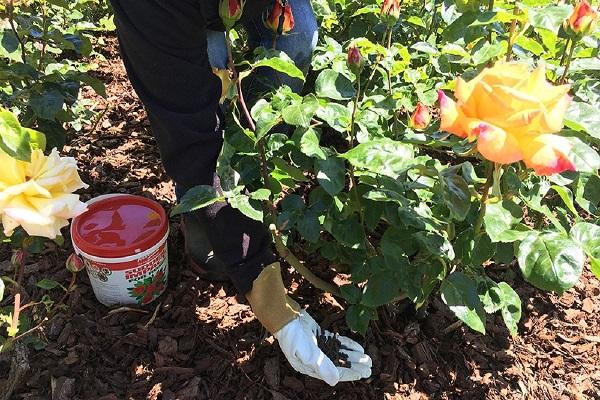
Pruning and replanting
Preventive pruning is necessary in the spring when the rose is in bloom and in the fall when the growing season ends. In the process, dried and damaged shoots are removed, which interfere with the full development of the shrub. Before wintering, it is recommended to shorten all shoots to 50 cm.
A transplant is needed when the bush grows.If he is cramped within a small area, he will have to dig up the plant and plant it in a more spacious place. The procedure is completed with abundant watering.
Features of wintering a flower
Gardeners recommend covering the inflorescence for the winter. For these purposes, take spruce branches, dry grass or foliage. No shelter is required in the southern regions.

Disease and pest control
Rose Versilia is susceptible to bacterial cancer, powdery mildew, and rust. Shrubs are often attacked by aphids.
To prevent problems, it is necessary to carry out preventive spraying 2 times a year: before and after flowering.
How to propagate?
Plant culture propagation is carried out using cuttings. To do this, dig out a bush and divide it into several parts. One of them is placed in a special solution for a while, and with the arrival of spring, planted in open ground.
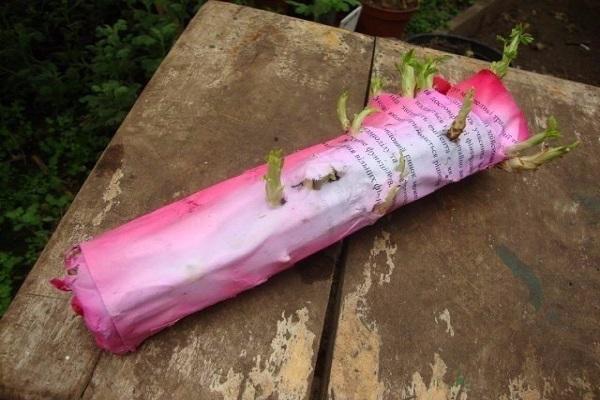
Use in landscape design
The Versilia variety is planted for the improvement of summer cottages, parks and squares. The plant is combined with other members of the Rosaceae family. But often in the landscape, Versilia is used alone.
